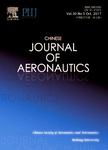Development of a coupled supersonic inlet-fan Navier–Stokes simulation method
Development of a coupled supersonic inlet-fan Navier–Stokes simulation method作者机构:National Key Laboratory of Science and Technology on Aero-Engine Aero-Thermodynamics Beihang UniversityBeoing 100191 China School of Energy and Power Engineering Beihang University Beijing 100083 China Collaborative Innovation Center of Advanced Aero-Engine Beihang University Beijing 100083 China GL-Turbo Compressor Company Wuxi 214106 China
出 版 物:《Chinese Journal of Aeronautics》 (中国航空学报(英文版))
年 卷 期:2018年第31卷第2期
页 面:237-246页
核心收录:
学科分类:082502[工学-航空宇航推进理论与工程] 08[工学] 0802[工学-机械工程] 0825[工学-航空宇航科学与技术] 0801[工学-力学(可授工学、理学学位)]
基 金:support of National Natural Science Foundation of China (Nos. 51706008 and 51636001) China Postdoctoral Science Foundation (No. 2017M610742) Aeronautics Power Foundation of China (No. 6141B090315)
主 题:Body force model Coupled simulation Rapid numerical method Supersonic inlet-fan Viscous flow
摘 要:A coupled supersonic inlet-fan Navier–Stokes simulation method was developed by using COMSOL-CFD code. The flow turning, pressure rise and loss effects across blade rows of the fan and the inlet-fan interactions were taken into account as source terms of the governing equations without a blade geometry by a body force model. In this model, viscous effects in blade passages can also be calculated directly, which include the exchange of momentum between fluids and detailed viscous flow close to walls. NASA Rotor 37 compressor test rig was used to validate the ability of the body force model to estimate the real performance of blade rows. Calculated pressure ratio characteristics and the distribution of the total pressure, total temperature, and swirl angle in the span direction agreed well with experimental and numerical data. It is shown that the body force model is a promising approach for predicting the flow field of the turbomachinery. Then, coupled axisymmetric mixed compression supersonic inlet-fan simulations were conducted at Mach number 2.8 operating conditions. The analysis includes coupled steady-state performance, and effects of the fan on the inlet. The results indicate that the coupled simulation method is capable of simulating behavior of the supersonic inlet-fan system.



